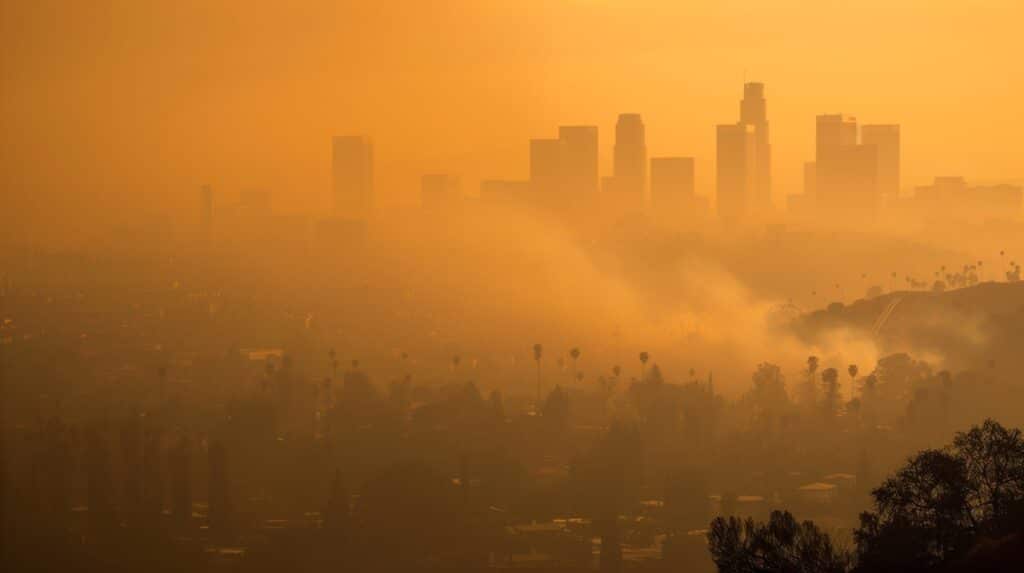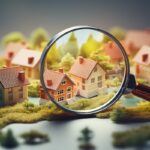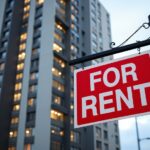With the Southern California region facing dangerous winds and extreme fire weather through Thursday, Gov. Gavin Newsom visited Pacific Palisades region Wednesday, and proclaimed a state of emergency to further support the communities impacted by fires in the Los Angeles Area. Authorities have ordered the evacuation of roughly 30,000 residents in the Los Angeles area.
Los Angeles County Fire Chief Anthony Marrone in a news conference said that as of Wednesday afternoon, the Palisades Fires have taken the lives of at least two individuals, and destroyed at least 1,000 structures.
On Tuesday, January 7, the Palisades Fire ignited in Los Angeles County, between Santa Monica & Malibu, and has destroyed thousands of acres of land as of Wednesday afternoon, fueled by high winds with gusts of 50 to 80 miles per hour anticipated, low humidity, and dry conditions that have increased the intensity and spread of the fire.
In addition to the Palisades Fire, other notable wildfires in the region include the Eaton Fire in Altadena, California which has burned 2,227 acres and the Hurst Fire in Sylmar, California which has burned 505 acres as of Wednesday afternoon—both fires resulting in the evacuation of many neighborhoods.
“The Santa Ana winds that are currently driving these fires occur periodically, but the most recent winds are exceptionally strong,” said Dr. Tom Jeffery, Senior Hazard Scientist at CoreLogic.
CoreLogic estimates that there are more than 456,000 homes with nearly $300 billion in reconstruction cost value at moderate or greater risk within the Los Angeles and Riverside metropolitan areas that are threatened by the fires. CoreLogic notes that this data represents the total number of homes and reconstruction cost value (RCV) within the metropolitan areas at risk in general, and is not specific to the current fire events. Data specific to the current fire events may be provided once there are well-defined fire perimeters.
Drought-like conditions have fueled the fires in the Los Angeles area, as the area of the Palisades Fire has been classified as abnormally dry since early December, and the area just transitioned to a moderate drought within the last 10 days, according to Dr. Jeffery.
“The area has been drying since the seasonal precipitation that occurred in late 2024,” said Dr. Jeffery. “The Santa Ana winds that are currently driving these fires occur periodically, but the most recent winds are exceptionally strong, with reported speeds of 50 to 60 miles per hour and greater. This not only drives the fires and embers but also inhibits flying the tanker aircraft and helicopters used to suppress the fires. There have been several small fires in this general area in the past: the 2019 Palisades Fire and the 2017 Topanga Fire. The 2021 Palisades Fire burned 1,203 acres, but was located in an undeveloped area north of the Palisades community.”
Last May, CoreLogic examined the growing risk of wildfires on U.S. properties and the damage inflicted on homes. In the report, used as an example is the year 2023, where an El Niño weather pattern brought increased moisture to the West and South regions of the nation. CoreLogic reported that 2,693,910 acres or 4,209 square miles burned in 2023 from wildfires, in contrast to the year 2022, when nearly triple the amount of that area burned, with fires touching 7,577,183 acres or 11,839 square miles (an area approximately twice the size of the state of Connecticut).
The study found that wildfires generally occur in transitional areas between dense development and wildlands. In the U.S., this intersection is home to approximately 45 million residences, a number that continues to grow annually. “Wildlands” refer to areas that are large, open expanses containing natural vegetation. They are not necessarily remote locations, but are classified as larger expanses of natural vegetation near cities where suburban developments are pushing outward from urban areas.
The study notes that embers were found to be responsible for an estimated 90% of home ignitions caused by wildfire, and there have been instances of embers igniting residences up to a half mile or more from an actual fire. Embers and high winds are also contributing to the damage which is hitting the Los Angeles region this week.
CoreLogic concluded that with 185,763 residents, Los Angeles topped the list most at-risk for wildfires. Following in second place was Riverside, California, located in the southern portion of the Golden State, where 166,372 residences were found to be most at-risk of wildfires. Rounding out the top 15 with the highest RCV, along with the number of residences in harm’s way, were:
- San Diego, California (123,060 residences)
- Sacramento, California (91,775 residences)
- San Francisco, California (56,985 residences)
- Oxnard, California (39,918 residences)
- Austin, Texas (64,768 residences)
- Denver, Colorado (57,731 residences)
- Truckee, California (43,674 residences)
- Colorado Springs, Colorado (39,854 residences)
- Santa Rosa, California (23,920 residences)
- Salinas, California (18,380 residences)
- Redding, California (28,271 residences)
- Bend, Oregon (24,755 residences)
- Edwards, Colorado (13,506 residences)
Click here for more on CoreLogic’s 2024 Wildfire Risk Report.






